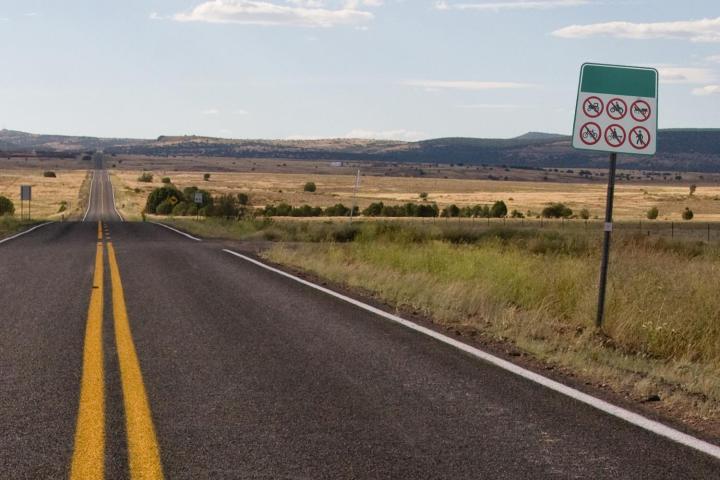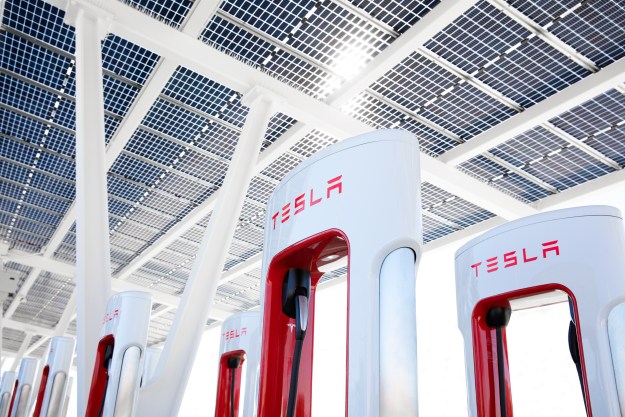
When Elon Musk unveiled his futuristic Hyperloop transportation system on Monday, virtually everyone erupted with excitement. San Francisco to Los Angeles in just 30 minutes! I don’t even know where those places are in relation to one another, but that sounds just peachy, said America. And there I sat, cheering right along with everyone else.
Sure, maybe the plan has some kinks to work out. But unless you’re claustrophobic, the prospect of one day rocketing around the country at 700 mph in a cozy capsule sounds like a welcome alternative to air travel, which has become both expensive and horribly unpleasant. A one-way S.F.-to-L.A. Hyperloop ticket, by contrast, would cost an estimated $20 and feel like floating – indeed, we would be floating on air, just not 30,000 feet of it.
Better than the price is the prospect of avoiding death by slamming into the earth at terminal velocity.
Which brings us to the next benefit: Better than the price is the prospect of avoiding death by slamming into the earth at terminal velocity; according to Musk, the Hyperloop would be next to crash-proof.
“The system is immune to wind, ice, fog, and rain,” Musk claims. “The propulsion system is integrated into the tube and can only accelerate the capsule to speeds that are safe in each section. With human control error and unpredictable weather removed from the system, very few safety concerns remain.”
Assuming for a moment that Musk is right, the Hyperloop represents yet another example of the ways in which travel in the remainder of the 21st century and beyond will be far safer than the barbaric options we currently employ. The other example of safer future-travel that comes to mind is, of course, driverless vehicles.
Just as Musk’s Hyperloop is currently a mere dream, so too is a driverless car that can accurately read road signs, detect pedestrians, or deftly handle rain, snow, or dust storms. But one day, Google’s driverless car engineers claim, these advanced computer-controlled vehicles will be far safer than any human driver on the planet.
Vehicle accidents killed an estimated 33,900 people in the U.S. in 2012. And that doesn’t count the various other injuries that result from the roughly 10.5 million (PDF) motor vehicle accidents that take place each year. Air travel is far safer, with only a few hundred deaths recorded globally in 2012, the lowest since commercial airline travel became a thing back in 1949. But if Musk and Google are right, we could theoretically see travel become a far less deadly endeavor, overall.
I love riding a motorcycle. It is both my favorite hobby and my one and only mental health remedy.
And yet, all this talk about safety has me worried. See, I am an idiot I ride motorcycles, perhaps the most dangerous form of transportation available. Statistically speaking, I have about an 80 percent chance of dying or suffering bodily injury from a motorcycle accident, compared to just 20 percent from a car accident. On top of that, at least one study shows that car drivers sometimes even try to hit motorcyclists – a ghastly phenomenon I have experienced repeatedly on my own rides.
Despite all this, I love riding a motorcycle. It is both my favorite hobby and my one and only mental health remedy. Some people do yoga to clear their heads. I ride motorcycles for the same reason.
Which brings me back to the Hyperloop and driverless cars: If completely safe transportation becomes the norm, it doesn’t take a wild imagination to envision a future in which both human-operated cars and – especially – motorcycles become illegal. Politicians have tried to ban far less dangerous things than heavy metal contraptions blasting past pedestrians and homes, after all. Even BuckyBalls – freakin’ magnets – are banned. Is it really so crazy to think that, one day in the distant future, regular cars and motorcycles could meet the same fate?
Such a dreary day is surely far off. Americans’ enthusiasm for the open road might not be what it was, but both the technology to replace regular ol’ vehicles and the political potential to do such a thing remain, for better or worse, works in progress. But that day will almost certainly come – whether it’s 10 years from now or 100. One can only hope that blasting around in a sardine can at nearly the speed of sound is a bit more exciting than Musk makes it out to be.
Editors' Recommendations
- Tesla to begin production on new, more affordable models
- Cruise woes prompt production halt of fully driverless van
- Cruise’s robotaxis have driven 1 million miles fully driverless
- Elon Musk to hand over first Giga Berlin Tesla cars on Tuesday
- Watch folks react to their first ride in GM Cruise’s driverless car


